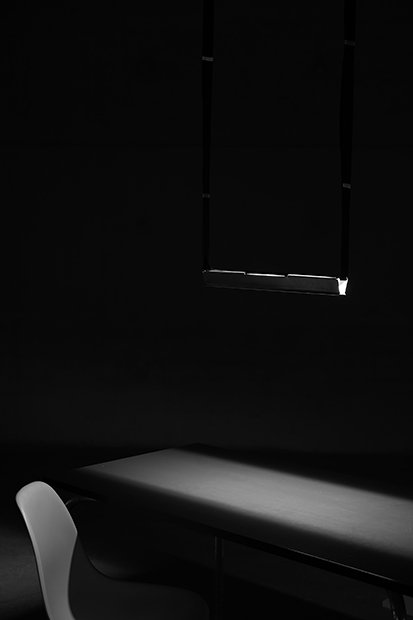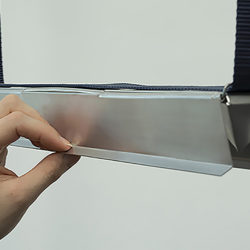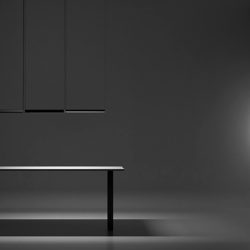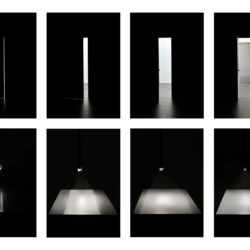Ästhetik der Dunkelheit
Description
BELT is a lighting tool that serves increasingly flexible forms of living and thus the multiple use of rooms and interiors. At a table, for example, there can be found a wide variety of application scenarios for a luminaire (dining, work, play, conversation, storage, presentation etc.). Since there is not always a need for global light or dimming on the whole surface of a table, BELT defines precise zones of light and darkness through two manually and continuously movable flaps. Thus, BELT enhances a more conscious usage of light and the sensibility of its perception. The flexible angle of the flaps also prevents glare of people of different sizes sitting at a table. Suspension via a belt ensures flexibility in alignment (horizontal or vertical) and individualisation via colour and material.What is the Topic?
In my bachelor project on "Aesthetics of Darkness" I designed a lamp that celebrates the aesthetics of darkness. Since the perception of the intensity of light is causally related to darkness, the developed luminaire provides for a more conscious and intensive perception and use of light. A practical field of application for this product can be found in the increasingly flexible use of living space - specifically, in the case of this project, the use of a dining table. Here, the luminaire serves a wide range of use scenarios through the targeted use of light. The user can step out of his passive role of use and actively create zones of light and darkness in accordance with the current situation.
Why does it look like this?
Inspiration for function and construction was provided by simple studio lights and the incidence of light through an opening door slit into a dark room.
What is special?
What is special about the work is the deep involvement with the theme of light and that, apparently paradoxically, darkness was used as the reason for designing a lamp. The luminaire itself is characterised by the fact that it not only simply illuminates a room, but also enables its user to direct light and darkness in a very direct analogue and therefore conscious way. Through this practical experience with light in everyday life, the perception and use of light remains an active part of human aesthetic competence.
What is new?
A luminaire becomes a design tool. The luminaire can be more than just passive lighting or dimming - it can be used to actively and directly control light and darkness manually to suit the situation. In this way it contributes to a more conscious perception and use of light.




